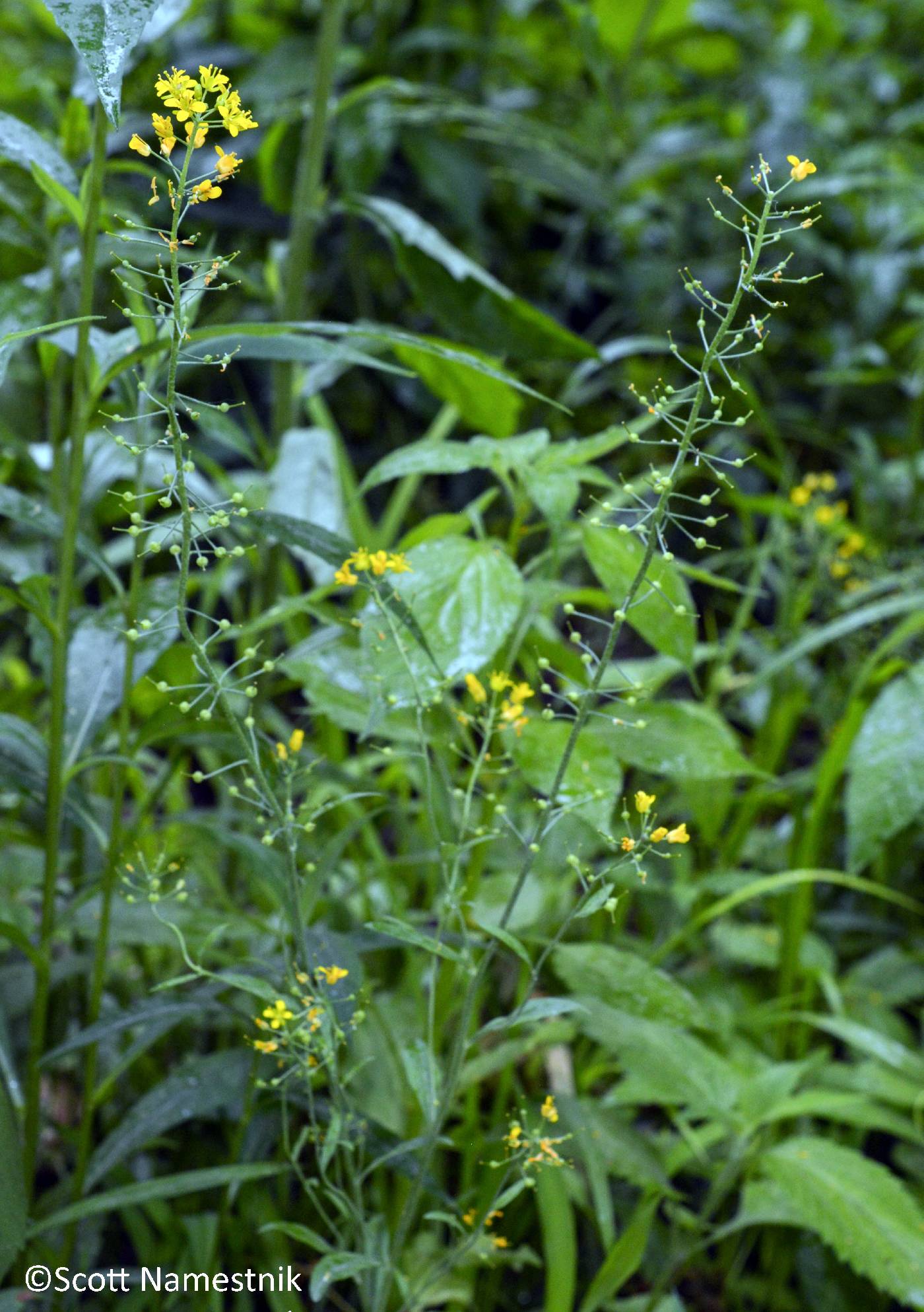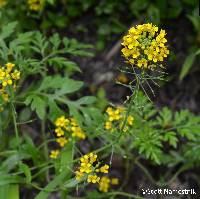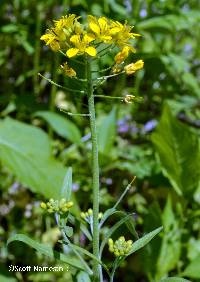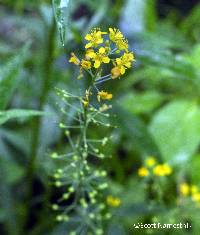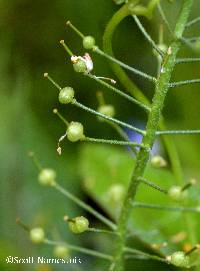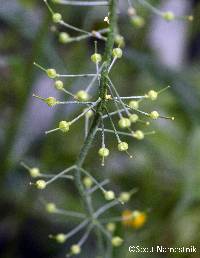Physaria globosa
|
|
|
|
Family: Brassicaceae
Globe Bladderpod, more...Short's bladderpod
[Lesquerella globosa (Desv.) S. Watson, moreVesicaria globosa Desv., Vesicaria shortii] |
Biennials or perennials; caudex branched, (± woody); densely pubescent, trichomes (sessile), 3-6-rayed, rays distinct and simple or furcate, (in 2 layers, lower layer umbonate, smooth to finely tuberculate, some often with a U-shaped notch). Stems several from base, erect, (arising among leaves of an elongated main axis), to 5 dm (± equal). Basal leaves (shortly petiolate); blade obovate to oblanceolate, (1.5-)2.5-5(-6) cm, margins entire, sinuate to shallowly toothed, or pinnatifid. Cauline leaves (sessile or shortly petiolate); blade oblanceolate to oblong, 1.3-3(-4) cm, (base cuneate), margins entire or repand to dentate. Racemes dense. Fruiting pedicels (usually spreading horizontally, straight), 7-14(-21) mm. Flowers: sepals elliptic or obovate, 2.6-4.1 mm, (median pair thickened apically, cucullate); petals (bright yellow), obovate, 3.5-6.5(-7.5) mm, (margins sinuate). Fruits (sessile or substipitate); globose, often slightly compressed apically, (1-)2-3 mm; valves sparsely pubescent, sometimes pubescent inside, trichomes spreading, 3-5-rayed; ovules 4 per ovary; style 2-3.5(-4) mm. Seeds flattened or plump, (often outer surface hemispherical, inner surface flattened, or both surfaces rounded). 2n = 14. Flowering Mar-May. Open rocky areas, shale at cliff bases, open talus, ledges, open cedar glades; of conservation concern; 100-300 m; Ind., Ky., Tenn. Physaria globosa is possibly introduced in Indiana. A report for Ohio was based on a collection by 'Jones,' but that specimen cannot be located.
Slender, taprooted perennial to 5 dm, erect and often branched near the base, copiously leafy to the base of the infl; basal lvs mostly 2.5-5 נ0.5-1.5 cm, obovate to oblanceolate, short-petiolate, entire or merely sinuate-toothed to sometimes pinnatifid; cauline lvs smaller, oblanceolate to linear, often erect and appressed; racemes with to 50 fls, elongating to 0.5-1 dm at maturity; pet 4-7 mm; ovules 2 per locule; mature pedicels straight, widely spreading or horizontal, 7-15 mm; frs subglobose, 2-3 mm, at first loosely stellate, in age glabrate; septum wrinkled, much larger than the replum; style 2-3.5 mm; 2n=14. Calcareous rocks and barrens; c. Tenn., nc. Ky., and s. Ind. Apr.-May. Gleason, Henry A. & Cronquist, Arthur J. 1991. Manual of vascular plants of northeastern United States and adjacent Canada. lxxv + 910 pp. ©The New York Botanical Garden. All rights reserved. Used by permission. From Flora of Indiana (1940) by Charles C. Deam Indiana Coefficient of Conservatism: C = 5 Wetland Indicator Status: N/A |

